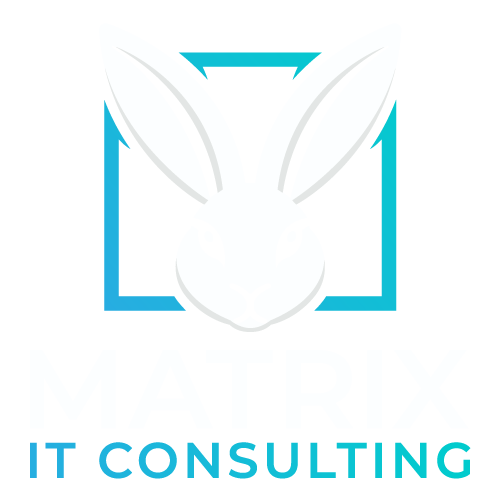Matrix IT Consulting Information Security Policy
1. Purpose
The purpose of this policy is to establish and communicate Matrix IT Consulting’s commitment to protecting its information assets and to set the framework for managing information security risks. This policy supports the implementation, maintenance, and continual improvement of the Information Security Management System (ISMS) in compliance with ISO/IEC 27001:2013 standards.
2. Scope
This policy applies to all employees, contractors, consultants, temporary staff, and third parties with authorized access to Matrix IT Consulting’s information systems and facilities. It covers all forms of information (electronic, paper, and verbal) and all IT systems, networks, and data centers under the management or control of Matrix IT Consulting.
3. Information Security Objectives
Matrix IT Consulting is committed to:
- Confidentiality: Ensuring that information is accessible only to those authorized to have access.
- Integrity: Safeguarding the accuracy and completeness of information and processing methods.
- Availability: Ensuring that authorized users have reliable and timely access to information and associated assets.
- Compliance: Meeting legal, regulatory, contractual, and internal security requirements.
- Risk Management: Identifying, assessing, and managing risks to information assets to acceptable levels.
4. Policy Statement
Matrix IT Consulting shall:
- Establish, implement, and maintain an ISMS that aligns with ISO/IEC 27001 standards and supports the company’s strategic objectives.
- Conduct regular risk assessments to identify, evaluate, and treat risks affecting the confidentiality, integrity, and availability of information assets.
- Implement appropriate security controls and continuously monitor and review their effectiveness.
- Ensure that roles and responsibilities for information security are clearly defined and communicated.
- Provide ongoing training and awareness programs to ensure that employees understand and adhere to this policy and associated procedures.
- Establish incident management processes for reporting, investigating, and addressing information security incidents.
- Promote a culture of security, accountability, and continuous improvement across the organization.
- Review and update the ISMS regularly to respond to new threats, vulnerabilities, and business changes.
5. Roles and Responsibilities
5.1 Executive Management
- Commitment: Provide leadership and resources to support the ISMS.
- Oversight: Regularly review the performance and effectiveness of the ISMS.
- Strategic Direction: Ensure that the ISMS aligns with the organization’s business objectives.
5.2 Information Security Manager (ISM)
- Implementation: Oversee the development, implementation, and maintenance of the ISMS.
- Risk Assessment: Coordinate regular risk assessments and security audits.
- Incident Response: Manage the response to security incidents and ensure that lessons learned are integrated into the ISMS.
5.3 Department Managers
- Enforcement: Ensure compliance with the information security policy within their respective departments.
- Training: Ensure that staff receive appropriate information security training and awareness.
- Reporting: Report any security incidents or concerns to the ISM promptly.
5.4 All Employees and Contractors
- Compliance: Adhere to the company’s information security policies, procedures, and guidelines.
- Vigilance: Report any suspicious activities, potential security breaches, or policy violations immediately.
- Responsibility: Understand and act upon the importance of information security in their daily activities.
6. Risk Management
- Risk Assessment: Conduct formal risk assessments at planned intervals and when significant changes occur.
- Risk Treatment: Implement risk treatment plans that may include risk avoidance, mitigation, transfer, or acceptance.
- Risk Monitoring: Continuously monitor and review risk factors and adjust security measures as necessary.
7. Information Classification and Handling
- Classification: All information assets must be classified based on their sensitivity and criticality.
- Handling Procedures: Define handling, storage, transmission, and disposal procedures for each classification level.
- Access Control: Ensure that access to information is granted on a need-to-know basis and is reviewed periodically.
8. Incident Management
- Reporting: All employees must report suspected or actual information security incidents immediately.
- Response: Establish and maintain an incident response plan to manage and mitigate the impact of security incidents.
- Investigation: Conduct thorough investigations of security incidents to identify root causes and improve controls.
- Communication: Notify affected stakeholders and comply with regulatory reporting requirements as needed.
9. Business Continuity and Disaster Recovery
- Planning: Maintain business continuity and disaster recovery plans to ensure the availability of critical systems and data.
- Testing: Regularly test and update these plans to reflect changes in the business environment or IT infrastructure.
- Recovery: Establish recovery time objectives (RTOs) and recovery point objectives (RPOs) for key processes.
10. Compliance and Audit
- Internal Audits: Conduct regular internal audits to ensure compliance with this policy and ISO/IEC 27001 requirements.
- External Audits: Cooperate with external auditors and regulatory bodies during audits and assessments.
- Non-Compliance: Address instances of non-compliance with appropriate corrective actions and disciplinary measures.
11. Training and Awareness
- Ongoing Education: Implement a continuous information security training program for all employees.
- Awareness Campaigns: Run periodic awareness campaigns to highlight current threats, best practices, and policy updates.
- Evaluation: Regularly evaluate the effectiveness of training programs and update content as necessary.
12. Policy Review and Maintenance
- Review Cycle: This policy shall be reviewed at least annually or whenever significant changes occur in the business or regulatory environment.
- Approval: Updates to the policy must be approved by executive management.
- Communication: Ensure that any revisions to the policy are promptly communicated to all relevant stakeholders.
13. Enforcement
Any employee, contractor, or third party found to have violated this policy may be subject to disciplinary action, up to and including termination of employment or contractual relationship, in accordance with applicable laws and regulations.

